Kristin Strock

Assistant Professor of Environmental Studies
- B.S., James Madison University, 2006
- M.S., University of Maine, 2010
- Ph.D., 2013
Contact Information
Phone: 717-254-8008
Email: strock@dickinson.edu
Dr. Strock uses modern aquatic ecology and fossil records contained in lake sediments, to explore issues that are critical to effectively managing freshwater resources. Her interests include freshwater and ecosystem ecology and paleoecology, ecosystem response to changes in climate and atmospheric deposition, watershed biogeochemistry, algal ecology, food-web interactions, and freshwater resource management.
Publications
Richardson, D.C., S.J. Melles, R.M. Pilla, A.L. Hetherington, L.B. Knoll, C.E. Williamson, B.M. Kraemer, J.R. Jackson , E.C. Long, K. Moore, L.G. Rudstam, J.A. Rusak, J.E. Saros, S. Sharma, K.E. Strock, K.C. Weathers, C.R. Wigdahl-Perry. 2017. Transparency, geomorphology, and mixing regime explain variability in trends in lake temperature and stratification across northeastern North America (1975 - 2012). Water. 9 (442) doi: 10.3390/w9060442.
Strock, K.E., N. Theodore, W. Gawley, A.C. Ellsworth, and J.E. Saros. 2017. Increasing dissolved organic carbon concentrations in northern boreal lakes: implications for lake water transparency and thermal structure. Journal of Geophysical Research: Biogeosciences. 122, doi:10.1002/2017JG003767.
Hayes, N., Deemer, B., Corman, J., Razavi, R., Strock, K.E. 2017. Key differences between lakes and reservoirs modify climate signals: a case for a new conceptual model. Limnology and Oceanography Letters. 2: 47–62. doi:10.1002/lol2.10036
Corman, J.; Deemer, B.; Strock, K.E.; Hayes, N.; Razavi, R. 2016. Geographically paired lake-reservoir dataset derived from the 2007 USA EPA National Lakes Assessment. Long Term Ecological Research Network Information System. http://dx.doi.org/10.6073/pasta/17cb7958c74f8bfc135f3e7f04ee944e
Corman, J.R., Deemer, B.R., Hayes, N.M., Razavi, N.R., Strock, K.E., Turgeon, K. 2016. Lake and reservoir management made a splash at the 2016 ASLO Summer Meeting. Limnology and Oceanography Bulletin. 25.4: 133-134.
Coble, A., Asch, R.G., Rivero-Calle, S., Heerhartz, S., Holding, J., Kremer, C.T., Finiguerra, M., Strock, K.E. 2016. Climate is variable, but is our science? Limnology and Oceanography Bulletin. 25:71-76 doi: 10.1002/lob.10115.
Strock, K.E., S.J. Nelson, S. Birkel, and J.E. Saros. 2016. Extreme weather years drive episodic changes in lake chemistry: Implications for recovery from sulfate deposition and long-term trends in dissolved organic carbon. Biogeochemistry. 127(2): 353 - 365 doi: 10.1007/s10533-016-0185-9
Boeff, K., K.E. Strock, J.E. Saros. 2016. Evaluating planktonic diatom response to climate change using a stratification index across three lakes with differing morphometry. Journal of Paleolimnology. 56(1): 33-47 doi: 10.1007/s10933-016-9889-z.
Hobbs W.O., B.M. Lafrancois, R. Stottlemyer, D. Toczydlowski, D.R. Engstrom, M.B. Edlund, K.E. Strock, J.E. Saros. 2016. Nitrogen deposition to lakes in national parks of the western Great Lakes region: isotopic signatures, watershed retention, and algal shifts. Global Biogeochemical Cycles. 30(3): 514 – 533 doi: 10.1002/2015GB005228
Strock, K.E., S.J. Nelson, J.E. Saros, J.S. Kahl, W. McDowell. 2014. Trends in biogeochemical recovery from acidification in the Northeastern U.S.: new insights from three decades of lake monitoring. Environmental Science and Technology. 48(9): 4681-4689.
Saros, J.E., K.E. Strock, J. McCue, E. Hogan, and N.J. Anderson. 2014. Response of Cyclotella species to nutrients and incubation depth in Arctic lakes. Journal of Plankton Research. 36(2): 450 - 460.
Strock, K.E., J.E. Saros, K.S. Simon, S. McGowan, M.T. Kinnison. 2013. Cascading effects of generalist fish introduction in oligotrophic lakes. Hydrobiologia. 711(1): 99 - 113.
Lake, B.A., C.R. Salm, K.E. Strock, J.E. Saros and A. Amirbahman. 2011. Multi-proxy paleolimnological assessment of biogeochemical versus food web controls on the trophic states of two shallow, mesotrophic lakes. Journal of Paleolimnology 46: 45 – 57.
Courses
ENST 335 Analysis and Management of the Aquatic Environment
In this course, students will learn about the physical, chemical and biological characteristics of streams, lakes, and wetlands and the interactions that shape these aquatic ecosystems. Students will apply information learned through field trips, lectures, class exercises, case studies, and discussion of relevant literature to investigate environmental problems associated with aquatic ecosystem response to human manipulations and disturbances ranging from global to local scales. Students will become familiar with common field and laboratory methods used for studying aquatic ecosystems. This experience will culminate in a field-based group research project. This course may count as a theme course in both the Environmental Science and Environmental Studies major or as an Applications of Environmental Science course. This course is offered every fall semester.
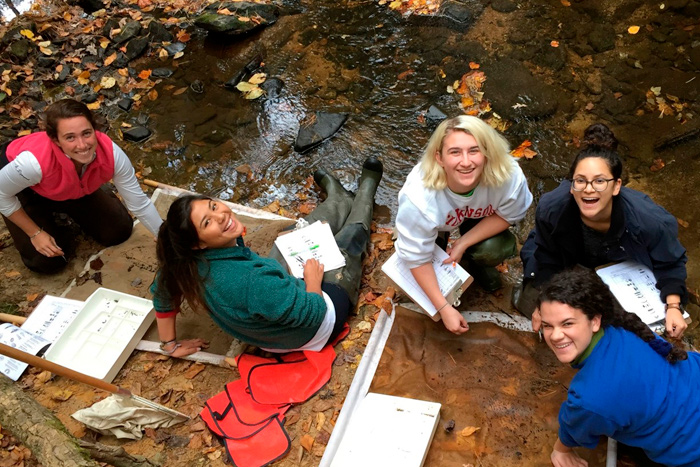
ENST 310 Conservation Biology
We appear to be entering the sixth major extinction of biodiversity in the history of life on earth. Unlike the previous five mass extinctions, this one is largely a result of human activity. The field of conservation biology has developed to face the challenge of protecting the world’s biological diversity and to better understand human impacts on species, communities, and ecosystems. In this course, we will examine the biological diversity of life on Earth: what is it, where is it, and how do we measure it? As a class, we will explore the history of diversity change through geologic time and discuss the implications of human activities on biodiversity. Through a series of readings, case studies, and hands-on activities, this course will cover the principles of conservation biology, as well as the ways in which we value biodiversity, including ecological, economic, and ethical perspectives. This course may count as a theme course in both the Environmental Science and Environmental Studies major or as an Applications of Environmental Science course. This course is a “special topics course” and is offered as scheduling allows.
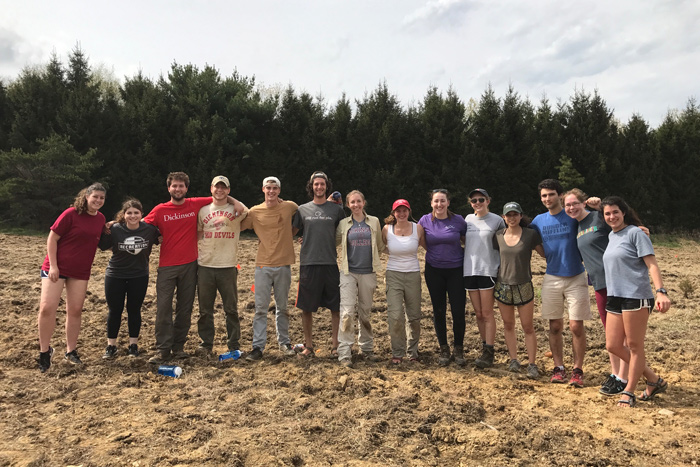
First Year Seminar: Where have all the wild things gone?
We appear to be entering the 6th major extinction of biological diversity in the history of life on Earth. Unlike the previous five mass extinctions, this fast-paced decline in the diversity of life is largely a result of one species, humans. In this course, we will explore the varied and complex relationship between people and the diversity of life on Earth. Through a variety of readings, we will look at how the diversity of life on Earth has changed in recent history and how scientists work to understand these changes and protect the world’s species, communities, and ecosystems. As we read both popular and scientific literature, listen to podcasts, and read news articles and blogs, we will ask: how do we value the natural world? and how do we decide what species and ecosystems to conserve and protect? As a class, you will weigh in on debates among leading professionals in the field of conservation biology on how best to protect biological diversity. This will include a range of topics, including de-extinction, or bringing back extinct species through a variety of techniques also known as “resurrection biology”. Is this just Hollywood science fiction or a valid scientific and ethical consideration? This semester’s experience will culminate with a hands-on activity restoring and protecting biological diversity while visiting with a local conservation organization. This course is taught on a rotating basis and may not be offered every year.
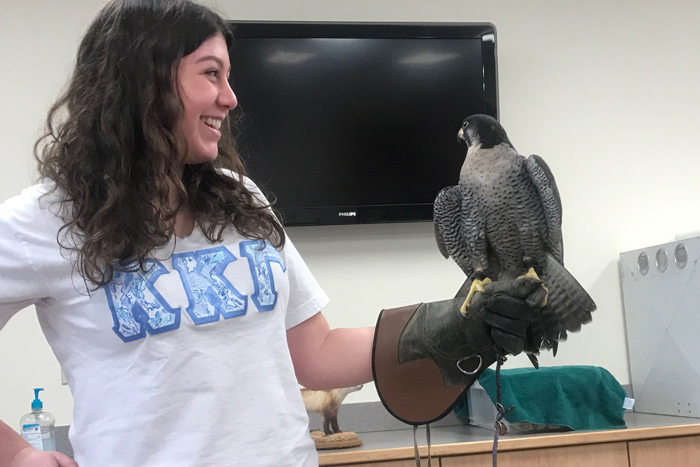
ENST 406 Global Environmental Change
The International Human Dimensions Programme defines global environmental change as the “set of biophysical transformations of land, oceans and atmosphere, driven by an interwoven system of human activities and natural processes” and its human dimensions as “the causes and consequences of people's individual and collective actions, including changes that lead to modifications of the earth's physical and biological systems.” In this senior seminar, students will explore the response of ecosystems to global change and the human dimension of that change. We will discuss a range of topics, many of which are chosen by students. Topics can include acidification, changes in landuse and landcover, the introduction of invasive species, rising temperatures worldwide, changes in extreme weather, or resource extraction. Recent articles in the literature and peer presentations will set the stage for group discussions and hands-on activities. This course is taught on a rotating basis and may not be offered every year.
Research Expeditions
Greenland
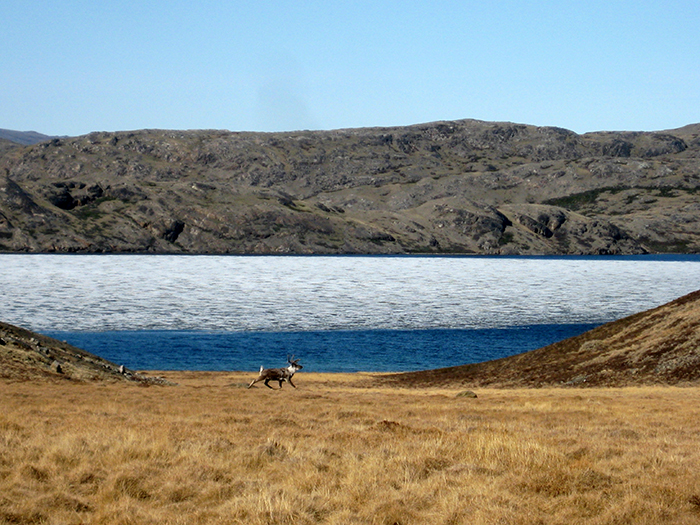
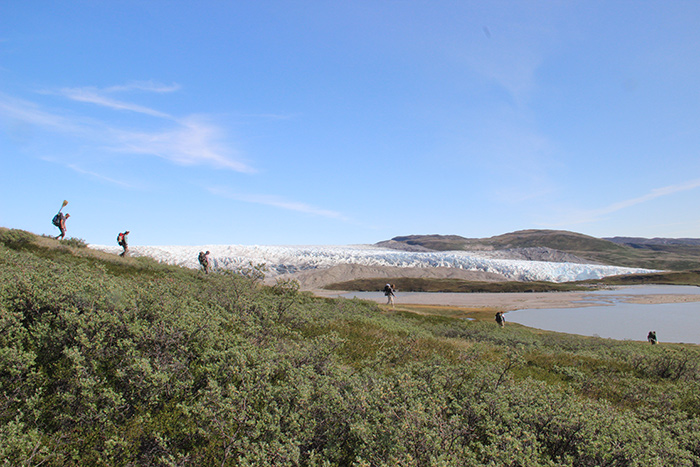
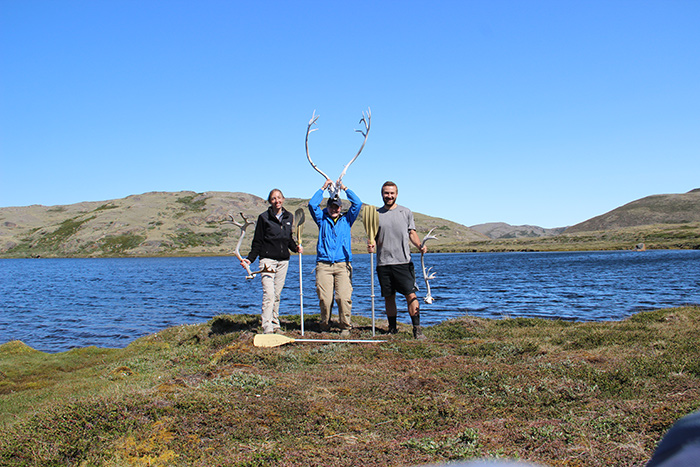
Iceland



Acadia National Park
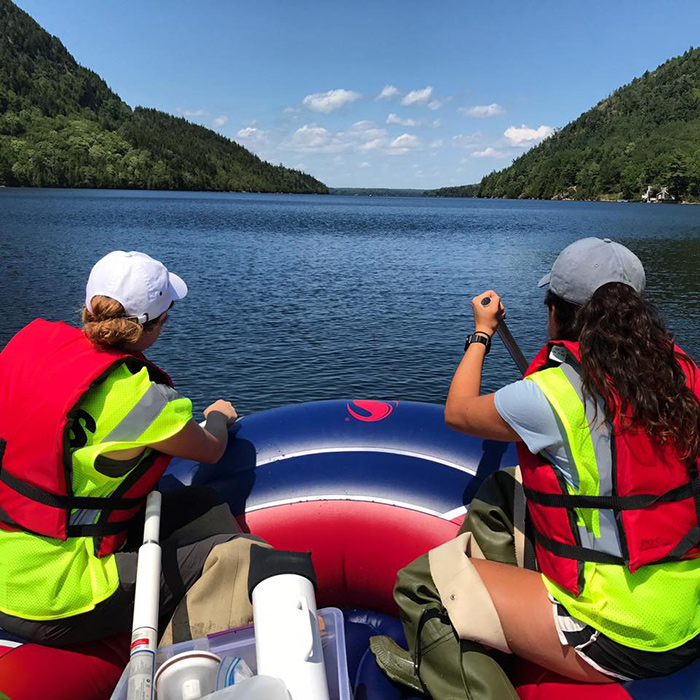
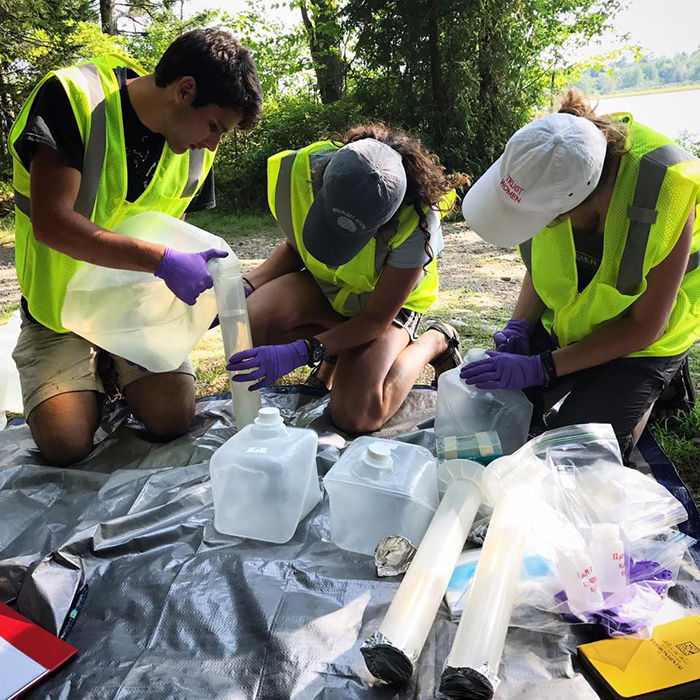

Isle Royale National Park
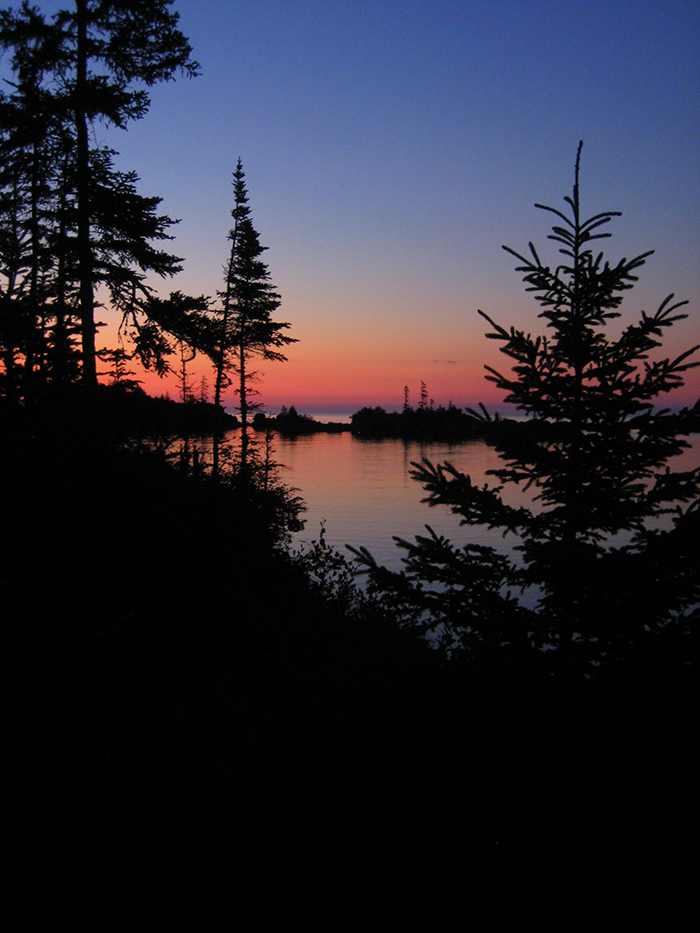
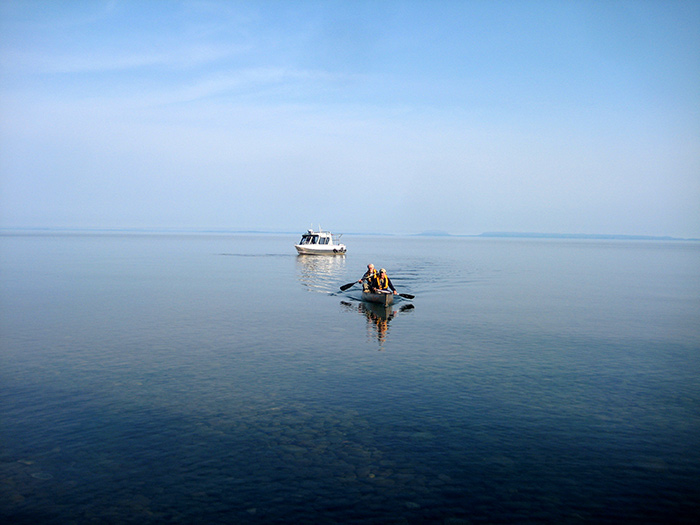
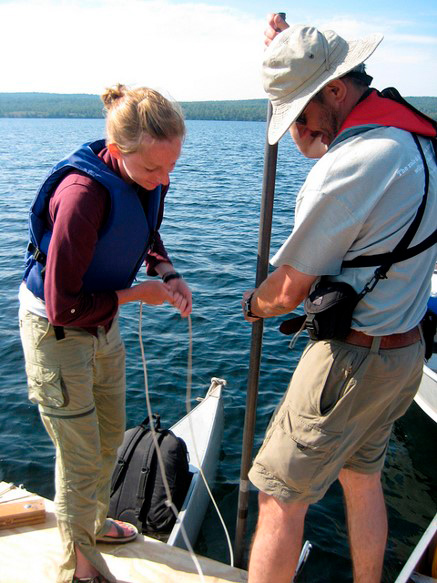
Pennsylvania State Parks
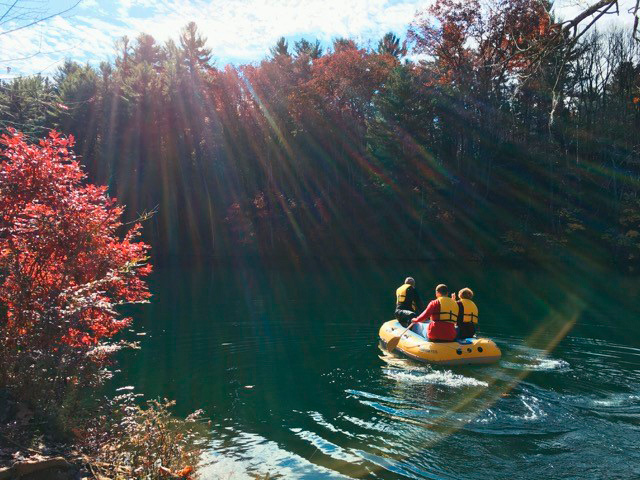
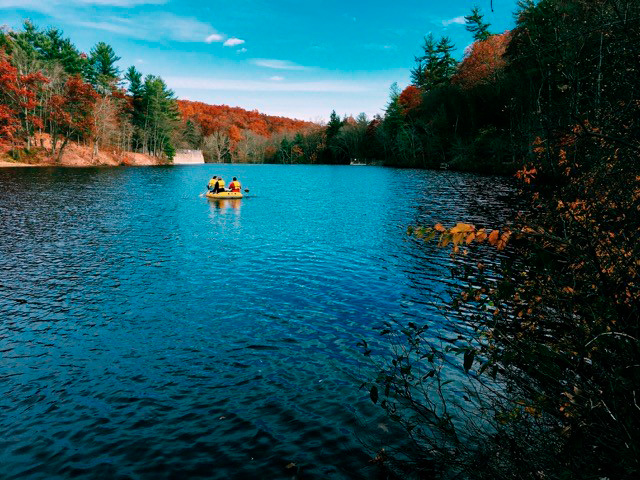

Lake Lacawac
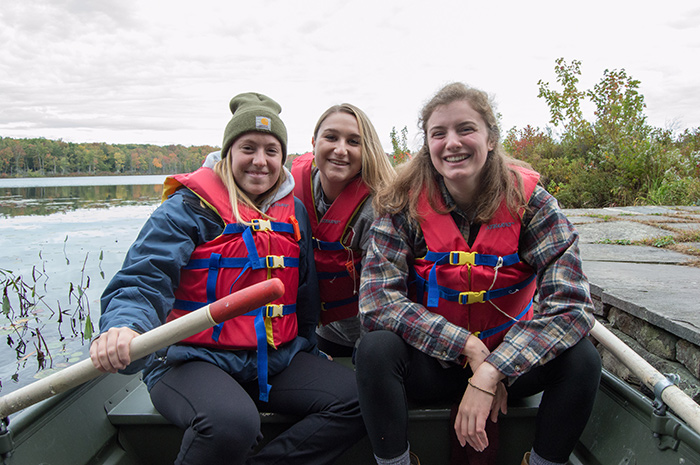
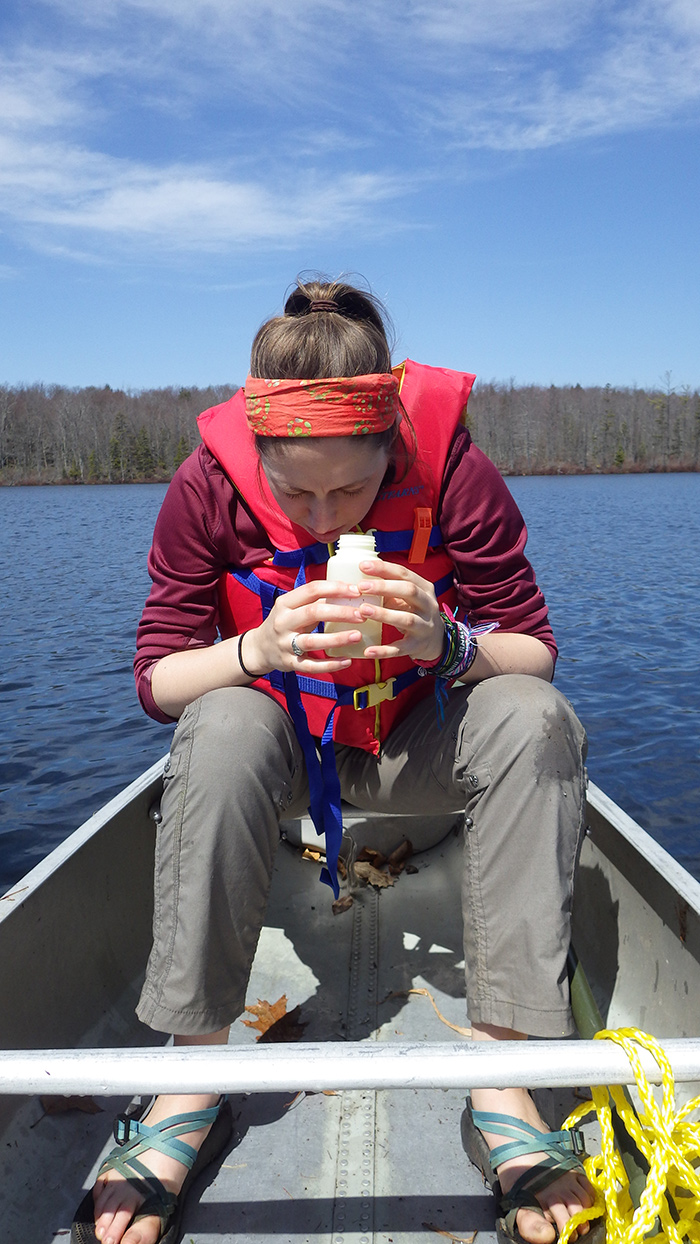
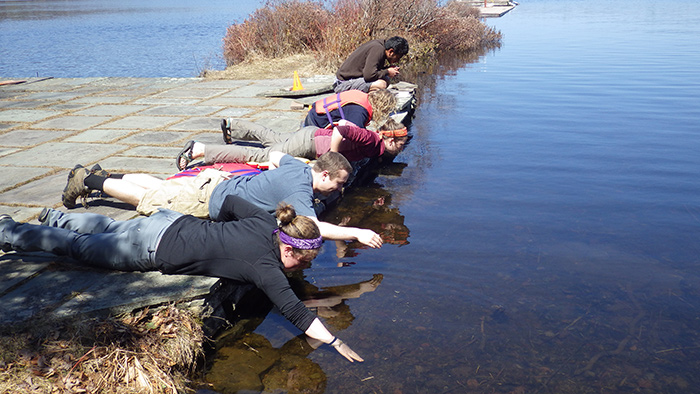
China



Student Research
Interested in aquatic ecology research? Please contact me as early as possible in your undergraduate studies. More information on research in the Environmental Science Department can be found online.
Lydia Fox Class of 2019
How do diatom communities in different regions of southern Iceland react to decadal changes associated with the NAO and how would future changes in climate change and patterns of the NAO influence these, and other, freshwater systems?
Madie Ritter Class of 2019
Effects of accelerated deglaciation on chemical characteristics of sub-arctic lakes and rivers in south and west Iceland.
Helen Schlimm Class of 2017
Long-term records of climate-induced changes in the zooplankton of west Greenland lakes.
Dan Day Class of 2017
Reduced water clarity in United States reservoirs as compared to lakes: Implications for mediating mass transport from continents to coasts.
Max Egener Class of 2016
The effects of extreme rain events on water thransparency and stratification in central Pennsylvania reservoirs.
Sydney Diamond Class of 2016
Diatom community shifts in response to volcanic activity and long-term climatic change in a high altitude South American lake.
Tiffany Chin Class of 2016
Differing patterns in seasonal succession of Phytoplankton in lakes with high and low concenterations of dissolved organics carbon: implications for long-term community shifts.
Tabea Zimmermann Class of 2015
Diatoms from the deep: what paleolimnology can tell us about lakes and environmental change in Pennsylvania.
Research in the News
- Smart Talk: Erik Arneson PA Open Records chief?; Health of area lakes studied
- Remember Acid Rain?
- UMaine Researchers Find Lakes Rebounding More Rapidly From Acid Rain Effects
- UNH Researchers Aim to Re-Domesticate Quinoa for Northern New England
- DCNR, Dickinson College Monitoring Health Of Three Lakes in Cumberland County
- 20,000 lakes